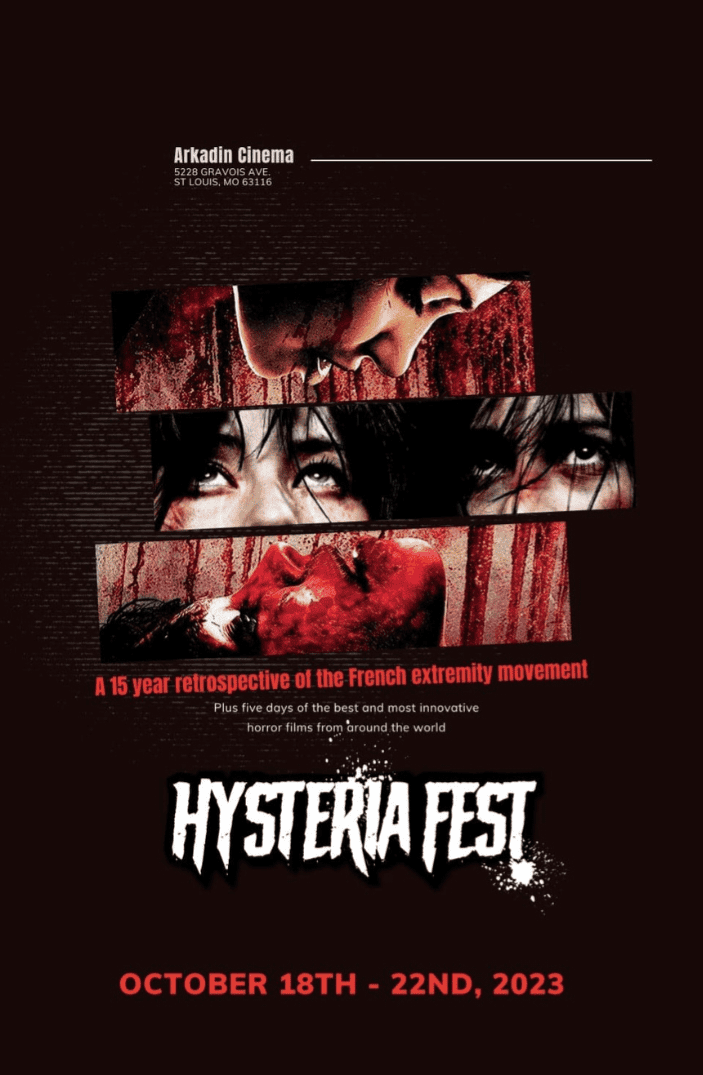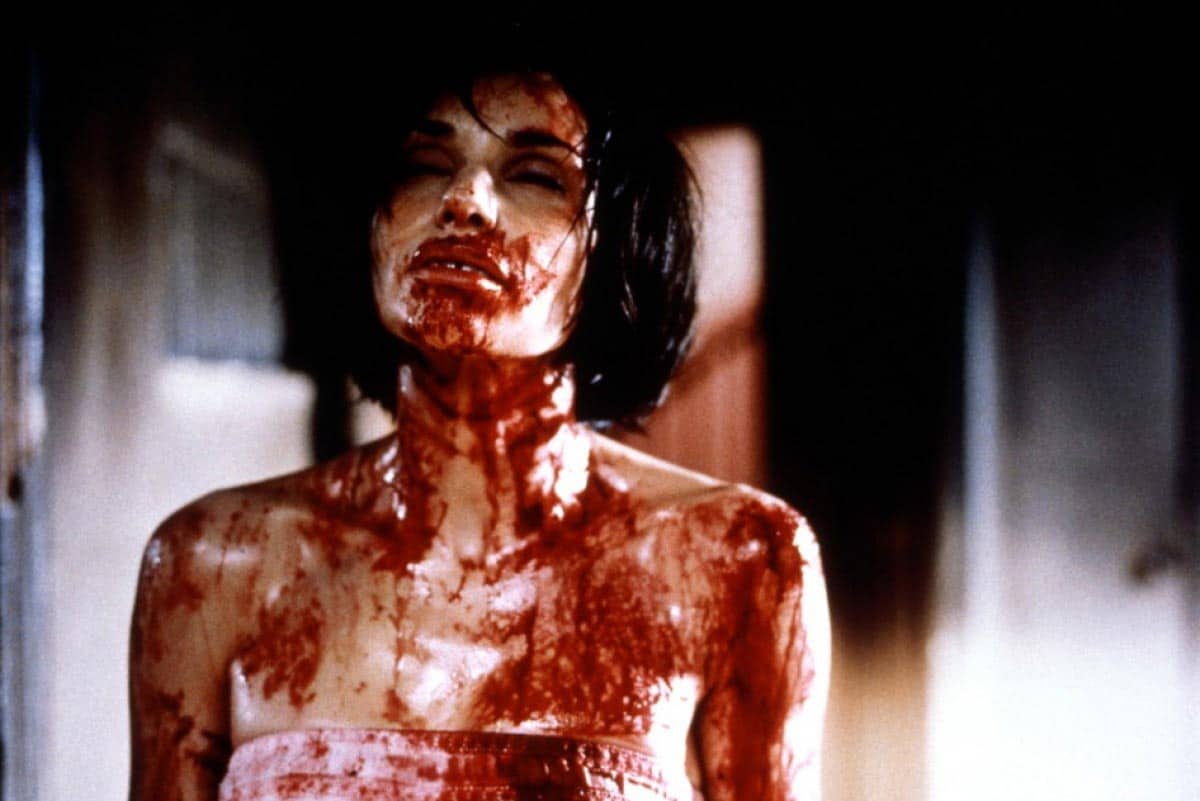
The New French Extremity Is A Showcase for St. Louis’ HYSTERIA FEST 2023
The French Extremity Movement is a movement that every horror fan seems to know of, yet no one can fully agree when it started. In fact, the term wasn’t coined until 2004, when film critic James Quandt came up with it. Many films have been credited as being the first. From Gaspar Noe’s I Stand Alone, which features disturbing and violent themes and is often seen as a precursor to some of his more extreme works like Irreversible. To Catherine Breillat’s Romance, which is often considered one of the early works of the movement, as it explores explicit sexual themes and relationships. To Claire Denis’ Trouble Every Day, which is a starting point for many, as this film combines elements of eroticism and violence, which became a hallmark of some films within the movement. And to Alexandre Aja’s High Tension, which by this time, it is completely 100% agreed upon we are in the movement, and this is the first film in the movement that skyrocketed to international multiplexes. France may have known there was a violence taking over their cinemas, but with High Tension, the rest of the world was about to learn.
Just as hard as it is to define when it began, it’s equally as hard to say when it ended. Martyrs is considered to at least be the culmination and exclamation mark on the movement, though many consider it to be continuing today, through the works of directors like Julia Ducournau, Coralie Fargeat, and Gaspar Noe, who not only helped define the movement, but is continuing well beyond it.
More importantly than the parameters of the movement though, a better question is what makes up a French Extremity film. A major identifying mark of a film from the movement is the challenging subject matter. Films associated with French Extremity often featured explicit and taboo themes, such as extreme violence, sexual violence, self-mutilation, body horror, and psychological distress. These themes were explored in a confrontational and unflinching manner. The films also dealt with societal anxieties, exploring themes related to sexuality, violence, alienation, and the human condition. It can be interpreted as a critique of contemporary society’s obsessions and discomforts. And the international impact, as the French Extremity Movement had a profound influence on international cinema, particularly in the horror and thriller genres. Filmmakers worldwide were inspired to push boundaries and explore similar themes.
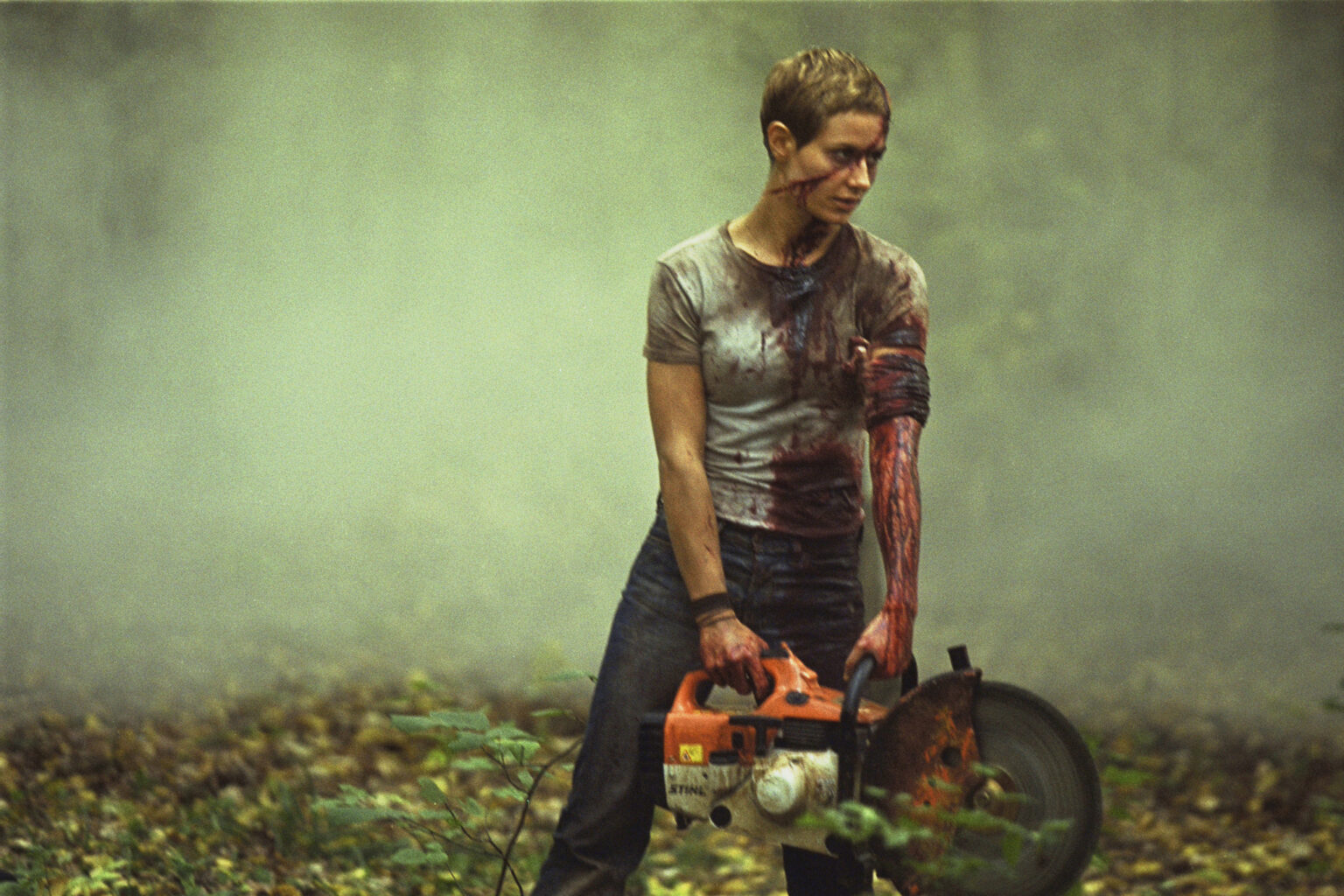
To achieve many of these themes, the French Extremity directors would often feature explicit violence, gore, and brutality. These depictions are used to shock and provoke strong emotional reactions in the audience. They would show sexual explicitness, as many of these films explore graphic sexual content and taboos, often intertwining sexuality and violence in a disturbing manner. They would explore different taboos, as French Extremity films frequently delve into societal restrictions, including but not limited to sadism, masochism, self-harm, incest, and other dark subjects. They explore psychological horror, as these films often emphasize psychological terror and the characters’ mental states, creating a sense of unease and discomfort. They explore ambiguity, as many films in this movement are characterized by narrative ambiguity, leaving audiences with unresolved questions and a sense of disorientation. And they explore minimalism style, as French Extremity directors often employ a minimalist and raw filmmaking style, using handheld cameras and limited use of music to create a more immediate and visceral experience.
The French Extremity Movement in truth was a subset to a wider trend of violence in horror. The movement itself was never fully contained to France, as many consider Farbice Du Welz’s 2004 film Calvaire to be part of the movement, even though it was filmed in Belgium. And some consider Michael Haneke’s 2001 film The Piano Teacher to be part of the movement. Possibly because it starred French actress Isabelle Huppert, even though it’s an Austrian film by an Austrian director.
But when you look around the world, and especially in the US, there was an uptick in more violent filmmaking. What are the reasons for this? One simple answer was that the 2000s were turning and rebelling against the clean, CW teen horror films of the late-90s that were trying to traffick in a wider audience. But another reason is film started to reflect what was going on in society, with the 9/11 attacks and the subsequent War in Iraq.
For a country like France, that wasn’t attacked on 9/11, yet still entered a dubious war against a whole other country from their NATO alliance, this is bound to cause more distrust in the elite and powerful.
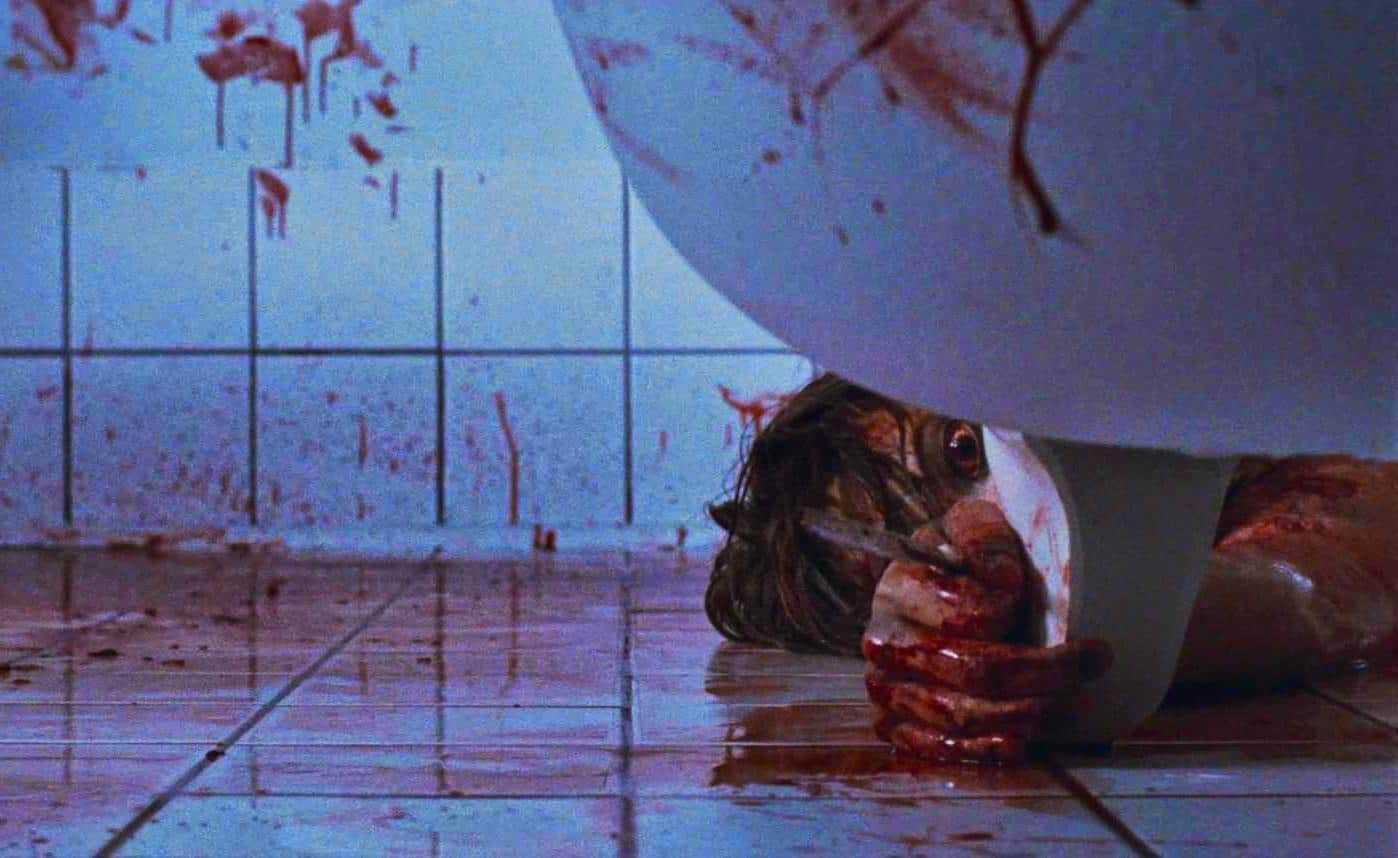
I think when you compare the violent films in the US to the violent films in France, the difference is in the details. Pascal Laugier, the director of Martyrs, once said that his films are part of the same movement as films like Hostel and Saw. “Torture porn.” But Laugier says his films, though also about pain and torture, are more about the pain than the torture. He proudly claims his films aren’t just riding out the pain and torment of what was happening in the world, but were actually about something.
So just to compare Saw and Martyrs, there are similar themes in both. And before I state them, I am aware that Saw is technically directed by an Australian, but everything else from the setting, to the themes to the production company are fully American. In Saw, it’s an older male facing death raining down law and order on younger people (they become even younger in the sequels). Saw is about law and order and pushing a morality onto the youth who are selfish and take life for granted. It’s truly a “kids these days” franchise. And as much as the films posit the victims as the protagonists and Jigsaw as the antagonist, the films are clearly in awe of Jigsaw’s brilliant means and motives.
Compare this to Martyrs, a film that is also about the older and the elite facing death the way John Kramer is, but in this case, the elite are clearly the enemies. The way they torment and kill the youth is reflective of a country watching the older and the powerful sending kids to die in a war they felt was unjust for an attack that wasn’t on them and against a country that had nothing to do with he attack. There is no mistaking the commentary in Martyrs as being anti-authoritarian and anti-elitist. While the country that signed the Orwellian Patriot Act is making the films that say that sometimes the older and more powerful are right and kids need to be taught a lesson and get in line.
This is simply a glimpse at the thoughts behind the movement. It’s also why I’m so excited for this year’s Hysteria Fest to be a retrospective of the movement. On opening night, Wednesday October 18th at 7:30 pm, Montreal film critic Justine Peres Smith, who is the screen editor of Cult MTL, a contributor to Little White Lies and Roger Ebert, and a programmer with Fantasia Fest, will be joining us for a virtual Q&A to go more in depth in the movement than I ever can. Following that will be a secret screening of one of the films in the movement. And landmark film.
Then our closing night film, on Sunday October 22nd at 8pm, will be the 15-year anniversary screening of Martyrs. In between the films will be some of the best independent horror films currently on the film festival circuit.
The French Extremity Movement is a movement that people are passionate about, but it’s also a niche movement. Whether you are an expert in it who wants to watch it yet again, this time on the big screen, or a newcomer who wants to learn more, this is an opportunity for both. I always joke that Martyrs is the movie we all watched around 2009 in our homes, alone, experiencing trauma we have never forgotten. This is an opportunity for that collective trauma to all come together as one.
And if you’ve never seen it, or any of the French Extremity Films, I promise you will never forget them.
Andy Triefenbach
Andy Triefenbach is the Editor-in-Chief and owner of DestroytheBrain.com. In addition to his role on the site, he also programs St. Louis' monthly horror & exploitation theatrical midnight program, Late Nite Grindhouse. Coming from a household of a sci-fi father and a horror/supernatural loving mother, Andy's path to loving genre film was clear. He misses VHS and his personal Saturday night 6 tape movie marathons from his youth.
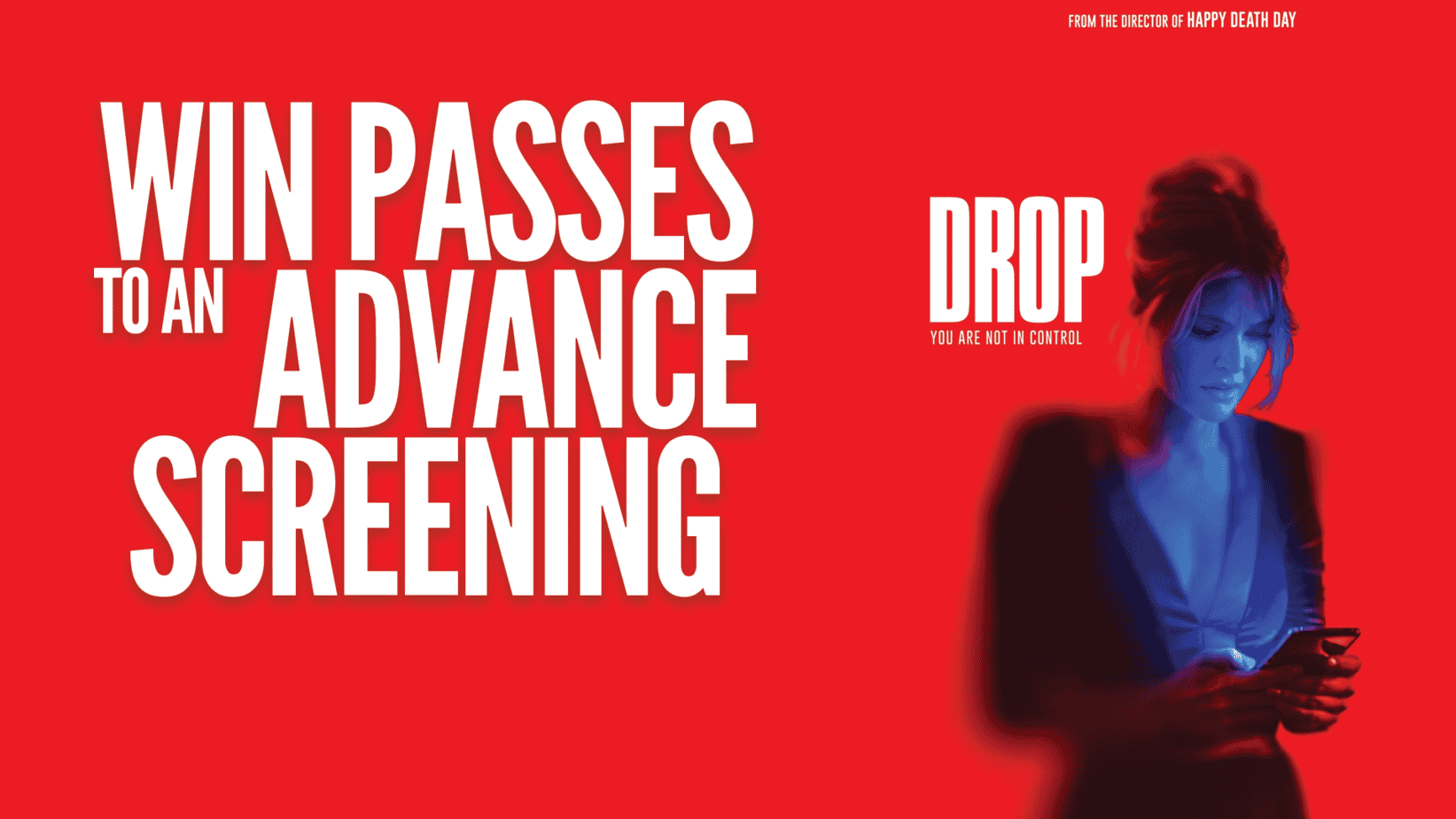
ST. LOUIS: Win Passes to an Advance Screening of ‘DROP’
Live in St. Louis and are free Tuesday, April 8th? We have some tickets that you could score for the
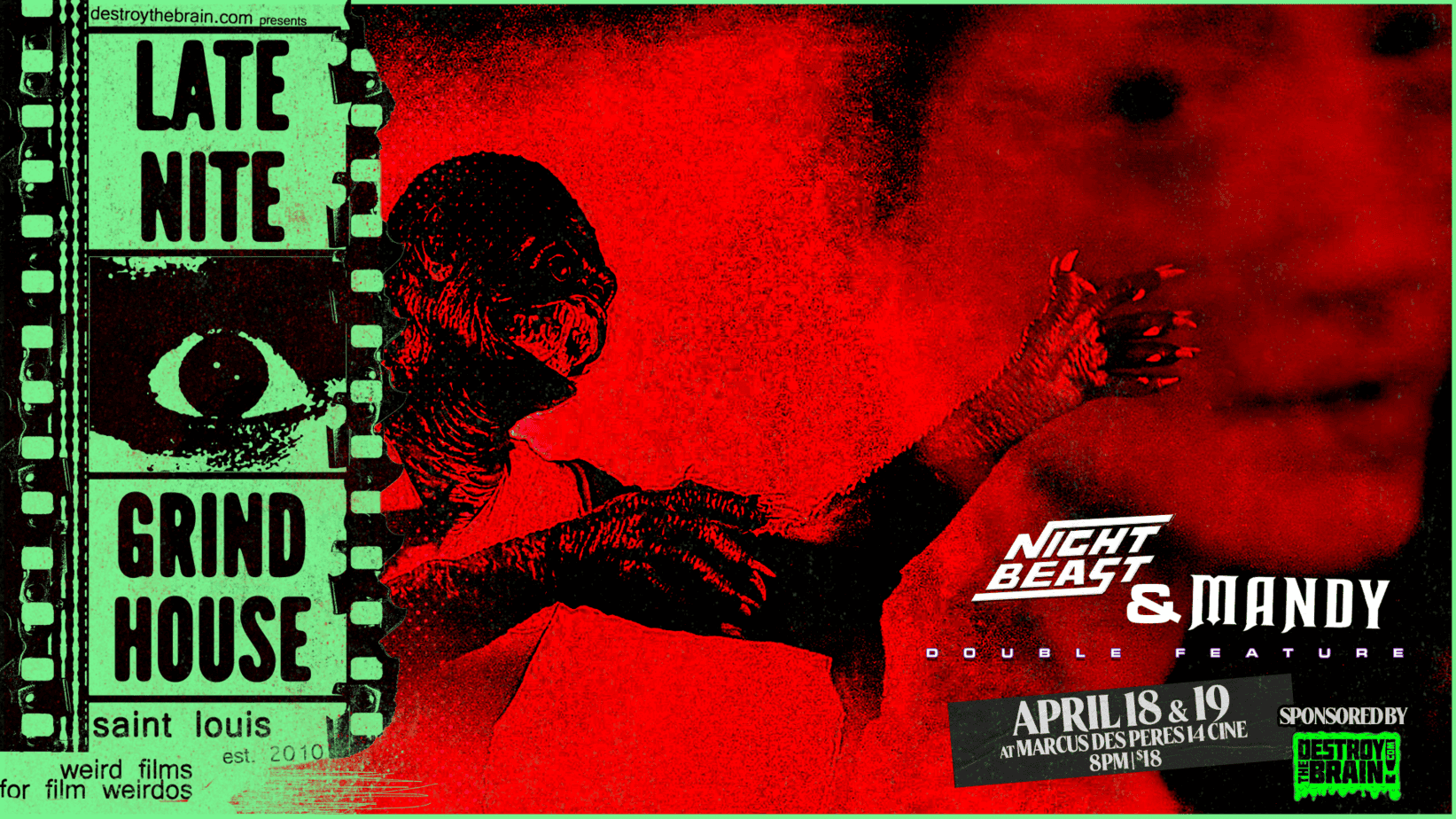
Late Nite Grindhouse Presents: ‘NIGHTBEAST’ & ‘MANDY’ Double Feature at Marcus Des Peres 14 on April 18 and 19
Our annual April tradition of showing Panos Cosmatos’s modern cult-classic in Mandy is here. T
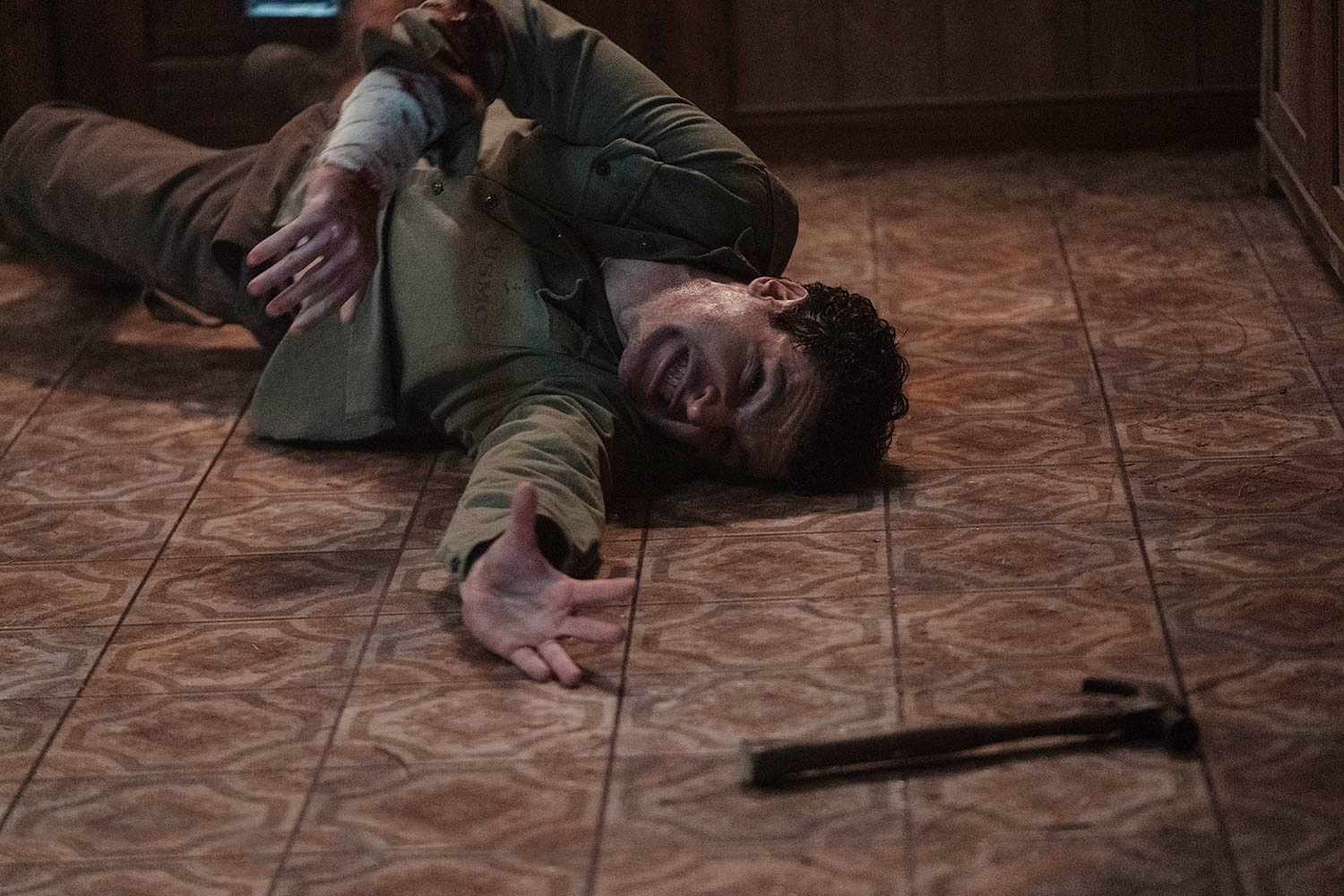
‘WOLF MAN’ Review: Blumhouse’s Body Horror Bummer
While 2017’s Dark Universe was scrapped shortly before it began its expansion, Blumhouse grabbed d

